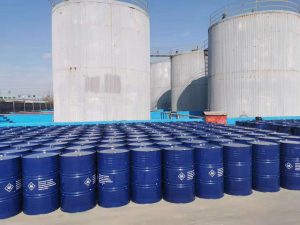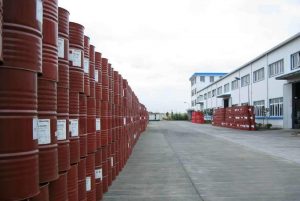Photogas and photogasification processes
Reaction type
Exothermic reaction
Key monitoring units
Photogasification reactor, photogas storage and transportation unit

Process Description
The photogas and photogasification process includes the preparation process of photogas and the process route to prepare photogasification products from photogas as raw material.
Process hazard characteristics
(1) Photogas is a highly toxic gas, and when it leaks during storage, transportation and use, it can easily cause large-scale pollution and poisoning accidents;
(2) The reaction medium has the risk of ignition and explosion;
(3) The by-product hydrogen chloride is corrosive and may cause leakage of equipment and pipelines, resulting in poisoning accidents.
Typical process
reaction of carbon monoxide with chlorine to obtain phosgene; synthesis of bi-phosgene and tri-phosgene from phosgene
synthesis of polycarbonates using phosgene as a monomer. preparation of toluene diisocyanate (TDI);
Preparation of 4,4′-diphenylmethane diisocyanate (MDI), etc.
Key monitoring process parameters
Carbon monoxide and chlorine gas water content; reactor temperature and pressure; dosage ratio of reaction substances; feed rate of phosgene; temperature, pressure and flow rate of the cooling medium in the cooling system, etc.
Basic requirements for safety control

Emergency shut-off valve; emergency cooling system; reactor temperature and pressure alarm interlock; local exhaust facilities; toxic gas recovery and treatment system; automatic pressure relief device; automatic ammonia or lye spraying device; phosgene, chlorine, carbon monoxide monitoring and over-limit alarm; dual power supply
Suitable control methods
In the event of any abnormalities in the photogas and photogasification production system or any accidental leakage of photogas and its highly toxic products, an emergency stop should be initiated through the automatic control interlock device and all materials entering and exiting the production unit should be automatically cut off; the reaction unit should be cooled down quickly; at the same time, the highly toxic materials in the accident equipment should be directed into the accident tank; the ammonia and dilute lye spraying should be switched on; the ventilation and detoxification system should be activated to discharge the toxic gases from the accident site to the treatment system. The toxic gas will be discharged to the treatment system.
2 Electrolysis process (chlor-alkali)
Reaction type
Heat absorption reaction
Key monitoring units
Electrolysis tank, chlorine gas storage and transportation unit

Process Description
The chemical changes that occur at both poles when an electric current passes through an electrolyte solution or molten electrolyte are called electrolytic reactions. Processes involving electrolytic reactions are called electrolytic processes. The preparation of many basic chemical industry products (hydrogen, oxygen, chlorine, caustic soda, hydrogen peroxide, etc.) is achieved by electrolysis.
Process hazard characteristics
(1) The hydrogen produced during the electrolysis of brine is a highly flammable gas and chlorine is a highly oxidising and toxic gas, the mixture of the two gases is highly explosive and when the chlorine contains more than 5% hydrogen, an explosion can occur at any time under light or heat;
(2) If the ammonium salt present in the brine exceeds the standard, under suitable conditions (pH <4.5), the ammonium salt and chlorine action can generate ammonium chloride, concentrated ammonium chloride solution and chlorine can also generate yellow oil-like nitrogen trichloride. Nitrogen trichloride is an explosive substance, contact with many organic substances or heating to 90 ℃ or more, as well as by impact, friction, etc., that is, violent decomposition and explosion;
(3) Electrolytic solutions are highly corrosive;
(4) Leakage of liquid chlorine may occur in the production, storage, packaging, conveying and transportation of liquid chlorine.
Typical process
Electrolysis of aqueous solutions of sodium chloride (table salt) to produce chlorine, sodium hydroxide and hydrogen;
Electrolysis of aqueous solutions of potassium chloride to produce chlorine, potassium hydroxide and hydrogen.
Key process parameters to be monitored
Levels in the electrolyser; current and voltage in the electrolyser; flow of material in and out of the electrolyser; concentration of flammable and toxic gases; temperature and pressure in the electrolyser; ammonium content in the raw material; content of impurities in the chlorine gas (water, hydrogen, oxygen, nitrogen trichloride, etc.), etc.
Basic requirements for safety control
Temperature, pressure, level and flow alarm and interlock of the electrolysis tank; alarm and interlock of the electrolytic power supply rectifier and the electrolysis tank power supply; emergency interlock cut-off device; chlorine absorption and neutralisation system in case of accident; flammable and toxic gas detection and alarm device, etc.
Suitable control methods
Formation of interlocking relationships between the pressure and tank voltage in the electrolytic tank and system set up for interlocking stopping systems.
Safety facilities, including safety valves, high pressure valves, emergency discharge valves, liquid level gauges, check valves and emergency cut-off devices.

